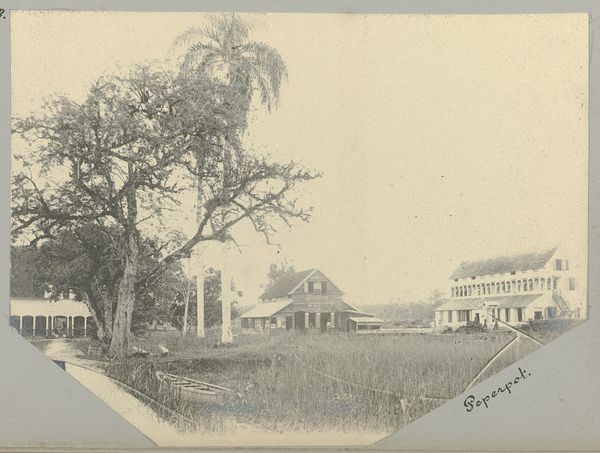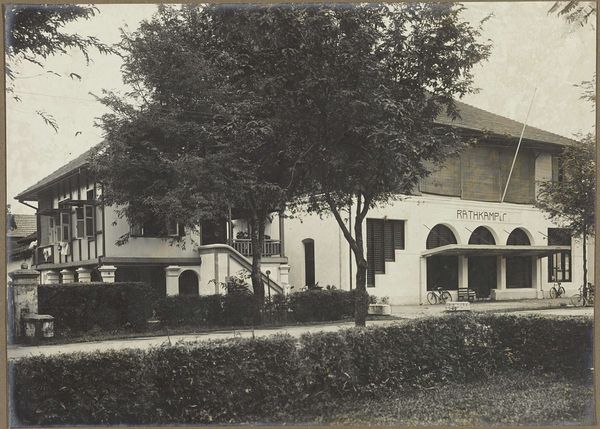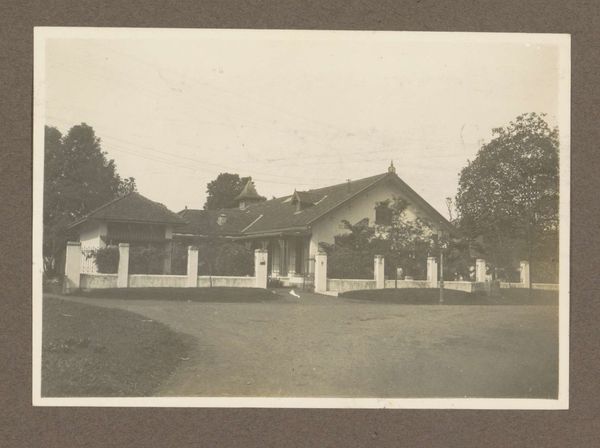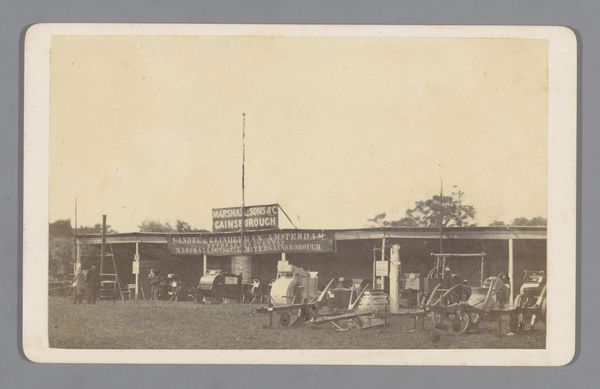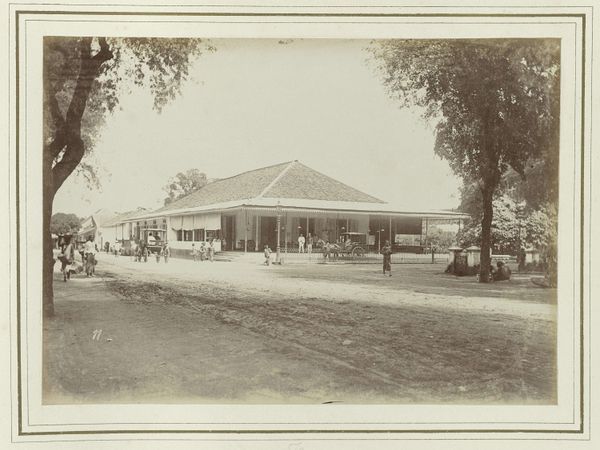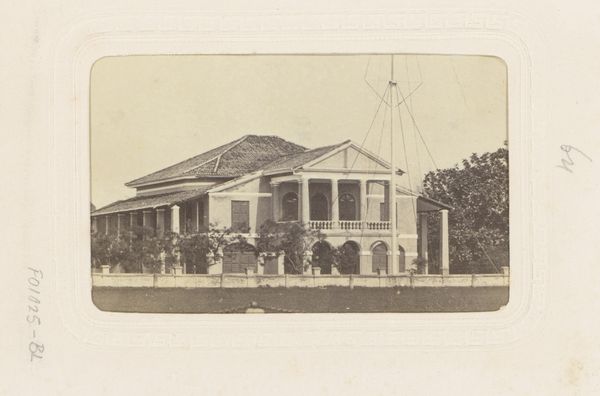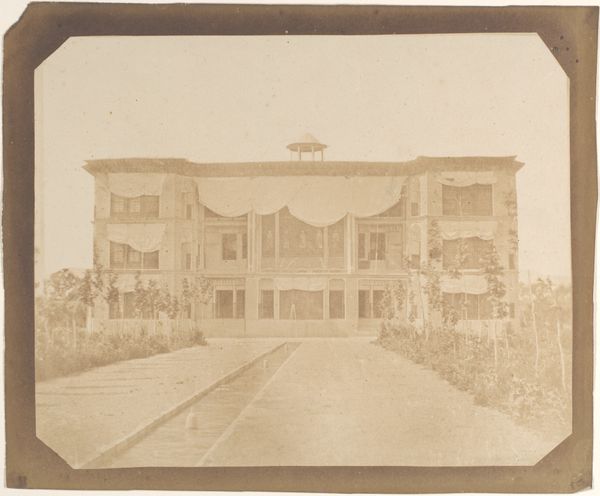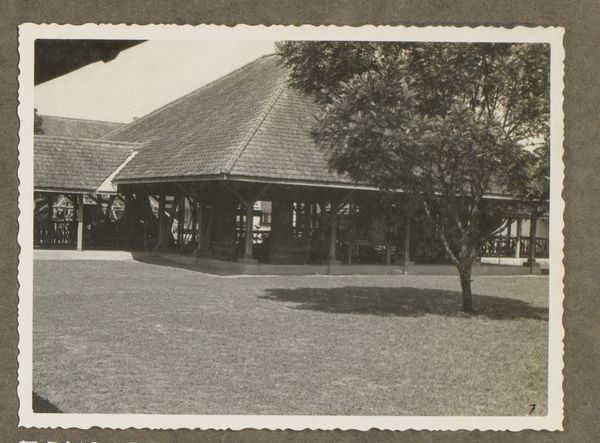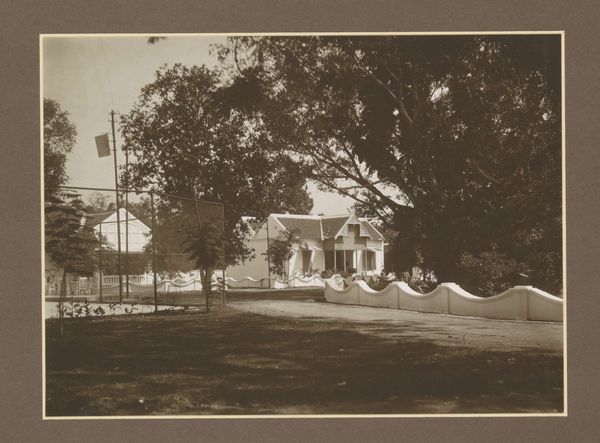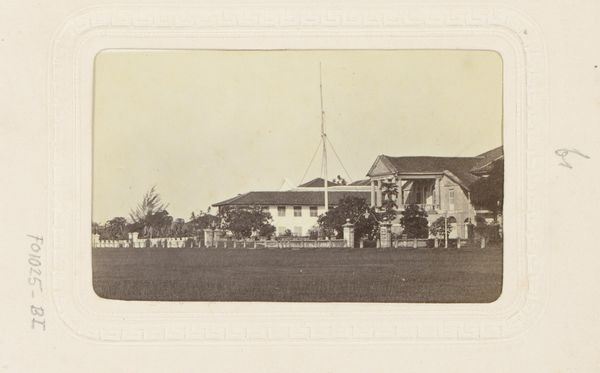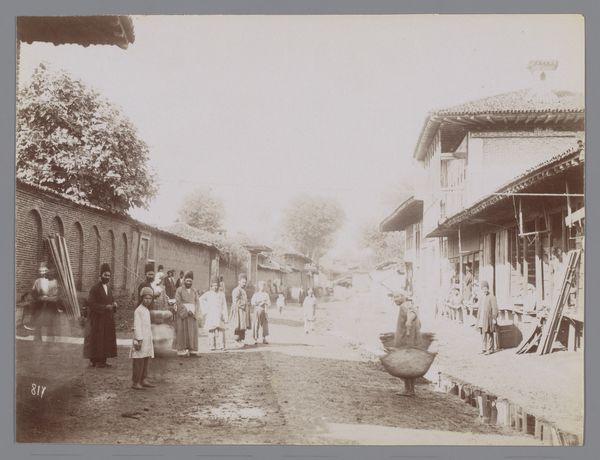
print, photography
# print
#
landscape
#
street-photography
#
photography
#
orientalism
#
cityscape
Dimensions: height 90 mm, width 135 mm
Copyright: Rijks Museum: Open Domain
Curator: Look at this gelatin silver print, "Het Postkantoor te Paramaribo," created sometime between 1900 and 1910 by Eugen Klein. It’s held here at the Rijksmuseum. Editor: It's evocative. Something about the way the light falls, it feels quiet but expectant, like a stage set just before the actors arrive. I’m intrigued. Curator: Klein really captures the blend of colonial architecture and the everyday lives playing out around it. We see the post office itself, quite stately, but also this woman walking across the street, those telephone poles jutting into the sky. There's this layering of worlds. Editor: Absolutely. Those power lines slicing across the sky signal modernization and, of course, colonialism. The photographic landscape tradition always runs a bit orientalist, right? It’s not just a neutral recording; it frames a relationship. Who is doing the looking and what are they seeing…or choosing to see? Curator: Yes! And Klein, though Surinamese, operated within the visual language dominant at the time, highlighting specific elements. He chooses to include the woman, giving her this space in the frame, perhaps drawing attention to her own place in that complex relationship. Editor: I'm thinking about visibility, representation. The architecture signifies power and institution. Who had access to that post office, and what messages were they sending and receiving? The woman traversing the space becomes, maybe, a stand-in for the narratives outside the frame. Curator: It's amazing how much history can be held in a seemingly simple street scene, wouldn’t you say? Editor: It makes me consider those lives lived within and around the captured scene, the hidden layers in the seemingly ordinary. It also highlights the necessity to decolonize how we look at photographic archives!
Comments
No comments
Be the first to comment and join the conversation on the ultimate creative platform.
